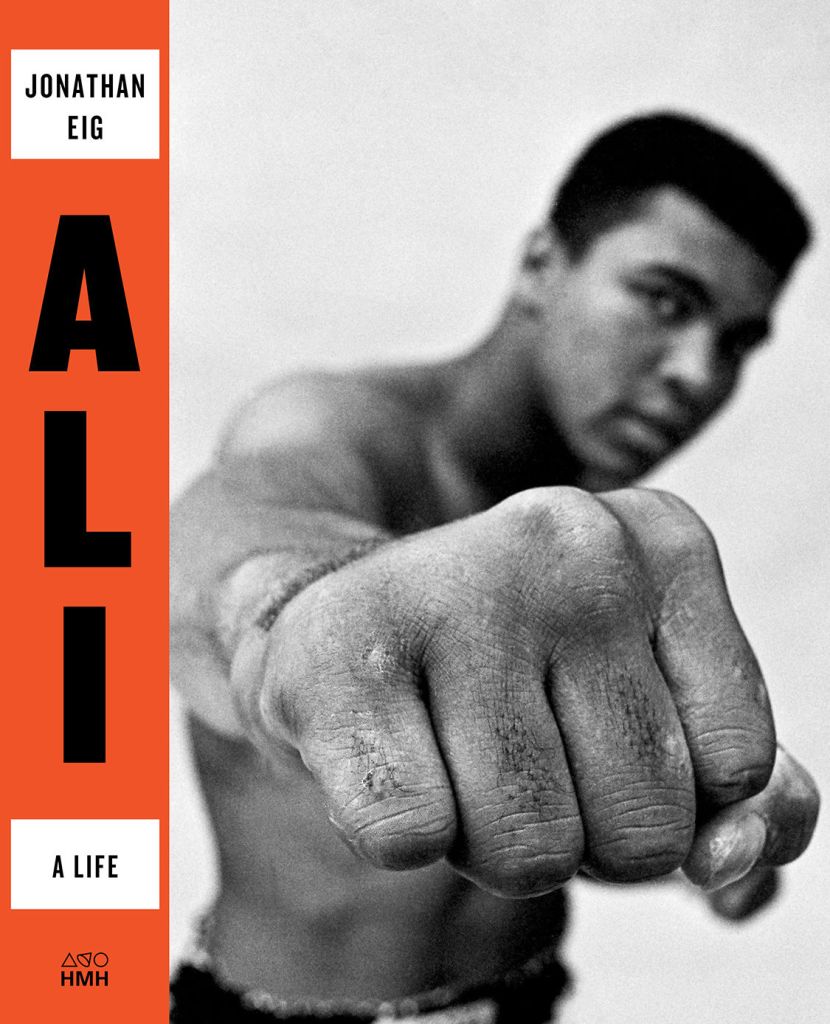Book review: ‘Ali: A Life’
Published 12:00 am Sunday, November 18, 2018

- Book review: 'Ali: A Life'
“Ali: A Life” by Jonathan Eig. New York: Houghton Mifflin Harcourt, 2017 and 2018. 623 pages, $30 (hardcover), $16.99 (paperback).
Muhammad Ali was one of the most controversial athletes in sports history. At different times in his life, he was the most hated and most beloved figure in the United States.
Trending
Jonathan Eig’s biography is an excellent overview that covers Ali’s life from his youth growing up in Louisville to his becoming the most recognized person in the world and ultimately to his degenerative illness and death in 2016.
In his section on Ali’s early life growing up in Louisville, the author documents the segregation the future boxer faced there: Cassius Clay knew he was permitted to play in Chickasaw Park, Ballard Park and Baxter Square, but not in Iroquois Park, Shawnee Park, Cherokee Park, Triangle Park, Victory Park or Boone Square. Fontaine Square Park, the city’s most popular amusement park, was within an easy walking distance of the Clay home on Grand Avenue in the West End, but it was restricted to whites only. Cassius’ brother Rudy said: “We’d stand by the fence, but we couldn’t go in.” The author also produces some very sobering statistics for this period: “Signs of inequality were everywhere. The homicide rate for black people in Louisville was about 56 per 1,000 in the mid-1950s, compared to 3 per 1,000 for white people. The death rate from natural causes was 50 percent higher for blacks than whites.”
After mentioning that September 1956 saw the integration of 54 out of 73 city schools, Eig comments: “Louisville’s early efforts at integration were not perfect. While white parents didn’t seem to mind sending their children to school with black children, they didn’t want their children educated by black teachers. … After two years of protest, the district agreed to choose 10 black teachers who possessed ‘good poise’ and who were not ‘too aggressive on the race question’ to begin working in predominantly white schools.”
Eig mentions that Ali’s ancestors in Kentucky date back to John Henry Clay, a slave who belonged to the family of Henry Clay and who may have been an illegitimate offspring of Henry or Henry Jr. He also says that Ali’s father Cassius inherited his name from his black uncle Cassius and from a white Cassius, Henry’s cousin, who “was a lawyer, soldier, publisher, politician and critic of slavery.” In his section on background, however, he does not mention that this white Cassius was also Cassius Marcellus Clay or explain why the full name of that man was passed down to the slave family, but perhaps that question has no answer, at least without some DNA testing.
The author skillfully interweaves the action in individual boxing matches with what was going on with the boxer’s life, his friends and family, and on a national level.
Eig includes an excellent group of black and white photographs representative of Ali’s life and career. He also adds an extensive list of source notes, an appendix listing details on each individual match of Ali’s career and an index. The book opens with a Preface set in Miami in 1964, when young Cassius Clay pulled off one of the greatest upsets in sports history by beating Sonny Liston and becoming heavyweight champion and thus fulfilling his childhood dream and frequently announced goal.
Trending
Then the chapters start with Clay’s growing up and his decision to become a boxer. With his victory over Liston, the pugilist could go public about his association with Malcolm X, Elijah Muhammad and the Nation of Islam, all of which made him a more controversial public figure. Clay now took the name Muhammad Ali, but I think that Eig’s point about his opponents’ refusal to call him by that name goes a little too far. He points out that other people, including Tony Curtis, Marilyn Monroe and Mother Teresa, had changed their names and few people insisted on calling them by their original names. However, in each case these figures became popular after their name changes, and this was not the case with Clay/Ali. The boxer also did not legally change his name. In addition, Ali regularly called his opponents by a host of derisive names, such as Uncle Tom, which is much more offensive, and the refusal of some to use the name Ali is therefore quite understandable.
Eig cites an interesting point from comedian Dick Gregory about Ali’s impact on black men and women all over the world when he says they “saw Ali doing these outrageous things, things black people were never supposed to do, saying things black people were never supposed to say, saying it all on live television – and getting away with it. And it made them ask, C’mon, Ali, who you praying to?”
After Ali’s title was stripped from him over his refusal to be drafted and his opposition to the Vietnam War and he was idle from 1967 to 1970, he would not return to boxing as the same fighter. The author captures Ali’s personal charm very effectively when he says that he “saw everyone he met as someone worth knowing.” From my own personal two encounters with him, I can confirm this ability because in both cases he talked as if we were old friends and introduced me to the people accompanying him, including his brother Rudy (later Rahaman) and Adam Clayton Powell.
Eig also provides insight into Ali’s struggle to avoid the draft and into the Supreme Court ruling that eventually exonerated him. I had never read before that President Lyndon Johnson had offered Ali a deal where he wouldn’t have to wear a uniform and he would just perform boxing exhibitions at Army bases. I had also not seen the legal arguments that Justice Potter Stewart used to create a compromise that would lead to a unanimous court ruling in Ali’s favor.
The author cites some interesting statistics: In analysis of 16 matches between 1960 and 1967, Ali landed 2,245 punches while getting hit by his opponents only 1,414 times. Over the rest of his career from 1970 to 1981, he hit his opponents 5,706 times and was hit 5,596 times. In addition, many more of his opponents’ hits were hooks and uppercuts that created greater damage than Ali’s frequent jabs.
Although Ali frequently talked about retiring from boxing, the money offered usually convinced him to accept one more fight after the other. Dr. Ferdie Pacheco, who worked in Ali’s corner, noticed signs of lasting brain damage after the first fight against Joe Frazier in 1971 and told Ali to quit, but Ali did not listen. An analysis of the boxer’s speech patterns after this reveal slurred speech and a marked decline in his ability to articulate words. Parkinson’s disease plagued Ali for his last few decades and the “Louisville Lip” no longer argued with Howard Cosell on television and seldom spoke in public. In one of the highlights of his life, Ali held the torch to light the cauldron to open the Olympic Games in Atlanta in 1996. His other arm was shaking visibly as he performed his duty and the acclaim he received confirmed that Ali’s public persona had come full circle from American hero at the 1960 Olympics to despised draft dodger and once again to heroic stature.
The author is very thorough in his coverage of Ali’s life and career. I did notice one error made twice (p. 65) when Eig was discussing the boxer’s opponents in the 1960 Olympic Games in Rome. The author says that one of them, Tony Madigan, had faced Clay in the Golden Gloves finals in 1959 in New York. Although Madigan represented New York-area boxers in the Golden Gloves, the fight was in Chicago, as Eig had made clear on p. 41. The fight was Clay’s first appearance on national television and this was also my personal first exposure to the boxer. There are several typographical errors in the text. One detail he omits is Clay’s boast in January 1963 that he wanted to fight two opponents (Doug Jones, ranked sixth, and Charlie Daniels, ranked seventh) on the same night to get him closer to a championship fight. In addition, although Eig names a chapter “Stand by Me” because Ali and Joe Frazier sang the song together in a 1970 car ride from Philadelphia to New York, he does not mention that Cassius Clay had released a popular version of that song as a single, following Ben E. King’s hit.
These are minor problems, however, and overall “Ali” is an excellent biography that holds the reader’s interest very effectively. I recommend it very highly for anyone intrigued by one of sports history’s most fascinating characters or for anyone interested in the history of the time period he lived through. It is a very interesting book and will not disappoint!
– Reviewed by Richard Weigel, WKU History Department.






